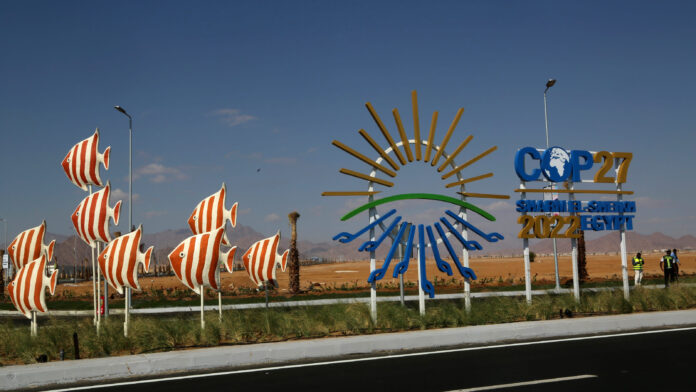Shehbaz Sharif was a busy man during his few days at Sharm El-Sheikh in Egypt. The mood around the Pakistan pavilion at the recently concluded COP27 conference sponsored by the United Nations was sombre. After all, the prime minister was attending the meeting despite intense political pressure back home, where an assassination attempt had been carried out against Imran Khan and the voices calling for fresh elections were gaining momentum.
Despite the worrying political scenario back home, Sharif will have got very little time to think about it. Since he landed in Egypt on the 6th of November all the way to his departure on the 9th, the high-powered Pakistani delegation that consisted of the prime minister, the foreign minister, and the climate change minister were on their feet.
The conference for Pakistan kicked-off with a bilateral meeting between the prime minister (PM) and the Saudi Crown Prince, Muhammad bin Salman on the sidelines followed by a number of bilateral meetings with different world leaders. The crowning moment for Pakistan’s campaign at this year’s meeting was a joint media briefing held at the Pakistan pavillion where the United Nations Secretary General, Antonio Gutteres, spoke alongside the PM. In the days that followed, Sharif delivered speeches pledging his support to the recently launched Middle East Green Initiative, spoke at a working breakfast of world leaders hosted by the German chancellor, attended a reception hosted by the Egyptian government and spoke at other events and talks along with daily bilateral meetings. The content in this publication is expensive to produce. But unlike other journalistic outfits, business publications have to cover the very organizations that directly give them advertisements. Hence, this large source of revenue, which is the lifeblood of other media houses, is severely compromised on account of Profit’s no-compromise policy when it comes to our reporting. No wonder, Profit has lost multiple ad deals, worth tens of millions of rupees, due to stories that held big businesses to account. Hence, for our work to continue unfettered, it must be supported by discerning readers who know the value of quality business journalism, not just for the economy but for the society as a whole.To read the full article, subscribe and support independent business journalism in Pakistan


























Good Information
Very Nice observation
A very insightful article to highlight a much valid point, however I would have appreciated if some recommendations for the solution were also presented here.
사설 카지노
j9korea.com